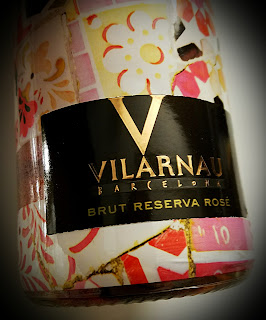Gil Family Estates is celebrating their 100th birthday this year. The bodega was founded in 1916 by
Juan Gil Jiménez in Spain’s Jumilla region, in the southeast, close enough to the sea to get a Mediterranean influence. Four generations have made wine there, and they keep getting better at it.
They actually have vineyards in eight of Spain’s appellations, so they can show off as much
terroir as you like, maybe more.
I was lucky enough to be invited to a special winemaker's portfolio tasting in Los Angeles in a private room at
The Bazaar by José Andrés. Members of the family and winemaking team were on hand and presented two of their lines,
Clio and
El Nido, in a vertical tasting. I think I was supposed to be at "the press table," but I got there late and was directed to the meeting of sommeliers. It was lucky day for me. I also got a great parking spot.
Clio is 70% Monastrell - Mourvédre, if you prefer - and 30% Cabernet Sauvignon. El Nido is the reverse, with Cab taking top honors. Both wines get about two years aging, in French oak for the Cab and American for the Monastrell. El Nido is aged in smaller barrels than Clio, and they recommend aging in your cellar for 15 to 20 years.
The wines come from the partnership between the Gil family and Australian winemaker
Chris Ringland. Grapes are grown at the highest spot in the area, at an elevation of about 2400 feet. Further north in Spain, that might not be possible, but the sea’s influence in Jumilla tempers the cold at that height. They dry-farm at Juan Gil, not that they have much choice. Southern California, even in a drought, is a tropical rain forest compared to the precipitation the weather reports allow for in Jumilla.
The roots of the old vines have to dig through three feet of solid limestone to get a drink. That’s
terroir.
Loren Gil said that just 20 years ago "it was not possible to think of wines of this quality from Jumilla." Things have really changed.
Gil mentioned that the biggest market for their wines is the U.S. Second is Canada, third is Switzerland. Spain, he was proud to say, has just moved up to become their fourth biggest market.
I’ll go through the wines they way they poured them, younger to older.
Clio 2011 - Big red and black fruit is layered with a floral aspect that is quite pronounced. The tannins are a little toothy yet, but not to distraction. And that will change.
Clio 2009 - Beautiful nose, fruity and floral., with blackberry, lavender and a savory edge. Very concentrated aroma and flavor. Great structure with enough tannin, but not too much.
Clio 2007 - A more earthy nose. More savory, too. Extremely smooth. Black fruit is more pronounced. They say the vintage was not a favorite, with rain at the close of harvest. It did not hurt the wine at all, though.
Clio 2005 - Very savory nose, with bramble, black fruit and a vanilla note coming out. Savory palate, even smoother. Bacon fat appears, the most savory of the lot.
Clio 2003 - Savory aromas of meat are really coming on, but there is still much dark fruit showing. Lots more vanilla here. Structure holding just fine. Palate is tasting very fruity but the dark, savory notes are becoming more vocal.
El Nido 2011 - Very dark color. Nose showing oak spice. Great acidity, extremely smooth with fantastic structure.
El Nido 2009 - Very dark again. Nose has black and blue berries and a floral aspect, rather perfumed. Very savory edge to the dark fruit flavors and quite smooth again, with great acidity.
El Nido 2007 - Beautiful smokey nose with very dark color and fruit. Very savory palate with nice tannins and juicy fruit.
El Nido 2005 - Smoke is giving way to bacon fat on the nose. The palate is blue and black fruit. Structure is very defined. Aromas and flavors show age, structure does not.
El Nido 2003 - Color is dark. Nose shows a tad of smoke, very savory. Palate strong with dark fruit, oak is nice, less savory than earlier vintages. Great structure, still with very firm tannins.
Follow Randy Fuller on Twitter







